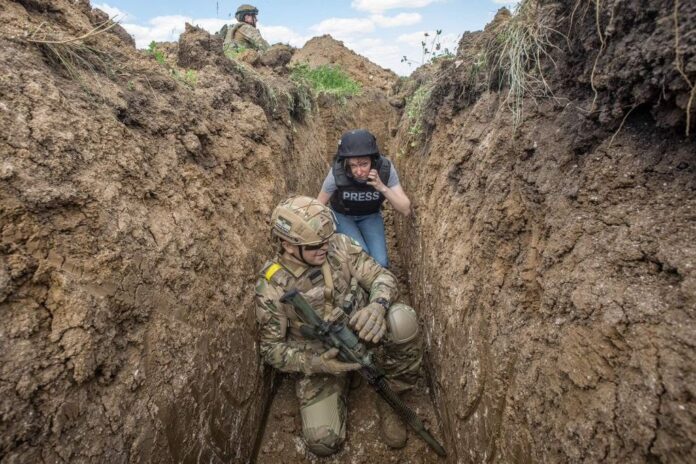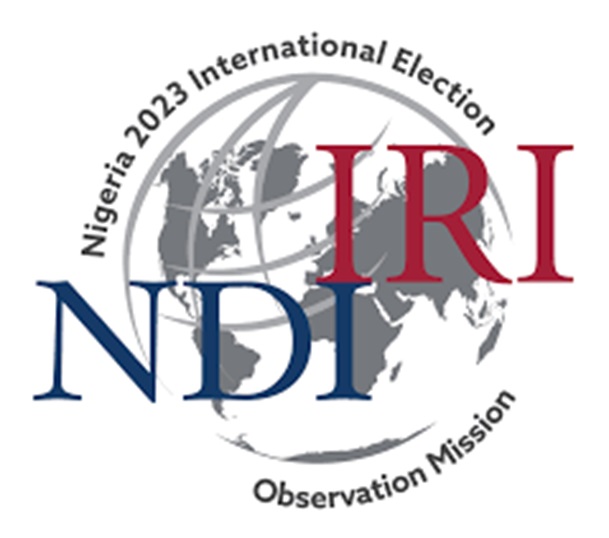In January, Ukrainian photojournalist Anton Skyba rushed to the Donbas region in eastern Ukraine to report on a town near the front line, Chasiv Yar. He came prepared. In a phone call with CPJ, he ticked off the items in his suitcase: personal protective equipment, including a helmet and an individual first aid kit with a chest patch “for the shrapnel”; a sleeping bag and camping stove to help with a lack of heat or hot water; and four power banks to ensure he could file stories and photographs. A satellite phone and tracker allowed for communication with the external world; potentially muddy conditions called for an extra pair of boots. There was also a small bottle of Tabasco sauce, allowing Skyba to “literally consume any food.”
Skyba, a photojournalist for Canada’s Globe and Mail newspaper, acknowledged that he is privileged to have these life-saving items while some freelancers struggle to survive sub-zero nights in frontline basements. But one year into Russia’s full-scale invasion of Ukraine, journalists can never be too prepared.
“Operating in Ukraine is about being absolutely autonomous, and it’s about being dependent on you, your crew, and everything that’s in your car, if you have one,” Skyba said.
The war in Ukraine has taken an enormous toll on the country’s press corps. Since last February, 15 local and international journalists have been killed—13 in direct relation to their work—many have been injured, and countless others have faced mental health challenges. Yet for local journalists, the initial shock of the war — and the confusion over how to cover it safely — has given way to a growing sense of resilience among reporters as they have been forced to adapt to their new roles as full-time war correspondents. In interviews with CPJ, journalists said not only are they committed to continue covering the war, they are prepared for the challenges to come. And equipment is just one part of the story.
‘A choice that Ukrainian journalists didn’t make’
While nearly eight million Ukrainians have fled the country since last February, according to U.N. figures, many of the country’s journalists chose to stay put and cover the conflict. In interviews, Ukrainian journalists remembered those first few weeks as shimmering with panic, a terrifying, chaotic time, when reporting was enveloped by the fog of war. Safety advisors who work with international news crews remember the general confusion, the fluidity of the situation, and the deficit of timely, reliable information when advising journalists’ movements as Russian troops encroached from multiple fronts.

The brutal speed of the invasion meant the country’s press corps quickly became war correspondents, “a choice that Ukrainian journalists didn’t make,” Skyba told CPJ. Even journalists like Skyba, who had covered the events around the 2014 Russian annexation of Crimea and fighting in the Donbas region were stunned by the invasion’s suddenness and scale. Few other stories mattered.
“We had people who were sports journalists, culture journalists, who became war correspondents,” says Nataliya Gumenyuk, a Ukrainian journalist who co-founded Public Interest Journalism Lab, a group that researches and implements journalism best practices. “A new generation appeared largely because of the scale [of the war].”
Kristina Berdynskykh’s work “completely changed” following the invasion, she told CPJ. A longtime politics reporter for outlets including New Voice of Ukraine, she shifted to freelance work, telling the stories of ordinary people in wartime. It’s not lost on her that she’s also a civilian whose life changed dramatically. In last February and March, she spent 17 days in Kyiv’s Obolon metro station with her mother and a teenage relative.
“At the beginning we didn’t understand sounds,” she said of the unfamiliar noises over the metro’s roof. “Is it air defense? Is it incoming? Is it outgoing? We didn’t used to live in a war. For us, everything was completely new.”

In the early days of the invasion, Ukrainian journalists and newsrooms desperately needed life-saving personal protective equipment like helmets and ballistic vests. But at that point, supply was so low that many were left in the lurch. Katerina Sergatskova, editor-in-chief of Ukrainian online news outlet Zaborona, gave local journalists six bulletproof vests stored in her newsroom before searching for equipment outside the country. She co-founded the 2402 Fund, an organization that provides safety equipment and training to journalists in Ukraine. CPJ has also assisted with such efforts, sending lifesaving medical supplies and individual first aid kits to Ukrainian journalists, as well as directing them to support from other press freedom groups. (CPJ deputy emergencies director Kerry Paterson is on 2402’s advisory board and CPJ’s delivery of the first aid kits was facilitated by the organization.)
Equipment can be prohibitively expensive, particularly for freelancers. Mykola Pastukh is a journalist who also provided support to foreign news crews after the war began. A former cinematographer, he had a car and camera equipment. “I decided it would be silly not to use it. I started shooting,” he told CPJ. But he couldn’t afford a helmet or a vest. After he was nearly injured in a bombing while reporting with a U.S. crew, he acquired a bulletproof vest from a soldier. (His arm was later partially paralyzed in a shelling attack during which he wore protective gear.)
To help local journalists prepare, 2402 offers Hostile Environment First Aid Training (HEFAT), the same courses provided to many foreign correspondents heading to global hotspots. Skyba, who teaches risk assessment as part of 2402’s courses, underscores just how vital this information is for journalists – whether they are covering war or simply trying to survive. Berdynskykh told CPJ that the most dangerous moment she faced was not on a reporting trip but on a New Year’s Eve outing, when shelling rained down near her car.
“There is no other option to survive,” Skyba said. “For the local journalists, risk-averse thinking is required all the time. Even taking the wrong street if you’re socializing with your friends can save your life. A rocket can land any second on the nearest building and you are done.”
Journalists adapt, while eyeing new threats
Ukrainian newsrooms have adapted their practices to wartime coverage. At Zaborona, journalists conduct risk assessments and have check-in calls when they are out reporting, and the publication provides the option of evacuation if the situation is deemed too dangerous. The outlet also offers psychological support. Reporting teams work in shifts: while one group is on the front line, another reports from a less dangerous location. No team is on the front line for more than a week to ensure everyone gets time to rest.
As the war drags on, new threats and complications have emerged. Journalists are reporting from areas containing unexploded ordnance (UXO). Attacks on the country’s energy infrastructure have forced the media to operate amid constant blackouts. Newsrooms are now competing with the military to purchase Starlink terminals—dishes that connect to Starlink satellites and provide internet service to remote areas—in order to keep their operations running, said Skyba.

Ukraine’s journalists also face unique challenges to their mental health. Stories they have covered, including of alleged war crimes in Mariupol and Bucha, can exact a heavy psychological price. But unlike their foreign correspondent counterparts, they cannot go home to peaceful countries. Gumenyuk said that many colleagues’ lives have been utterly shattered by the war: she mentioned fellow reporters whose homes in Irpin and Chernihiv were bombed, who were detained reporting in eastern Ukraine, or who were internally displaced after fleeing Kherson.
Many journalists said they deal with chronic stress. Yet they feel reluctant to take a break – for some, journalism is a way to serve their country, without carrying arms. (Other journalists did pick up arms, leaving the profession to fight in the war.) Several told CPJ that journalists live with the persistent feeling that they are not doing enough if they’re not reporting from the front lines, exposed to the maximum possible danger. All the stress creates fatigue, and fatigue can lead to mistakes, which only compounds the risk, said Skyba.
Then there are the losses to war: friends, relatives, and colleagues killed. Speaking of this near-universal experience, Berdynskykh recalled the first person she knew personally who was killed: Maks Levin, the Ukrainian photojournalist who was found dead after going missing in the Kyiv region early in the war.
“I don’t know how we adapt, we just do,” Sergatskova said. “What is clear from this type of coverage is the mental health challenges now facing Ukrainian journalists. There is a huge need for Ukrainian-language psychologists who can work specifically with journalists, and who can understand the details of the profession.”
Ukrainian journalists say they are prepared to cover this war for the long haul. International news outlets are, too: The New York Times and The Washington Post both opened new Kyiv bureaus last year, fortifying their presence for the foreseeable future. As the invasion’s first anniversary approaches, local journalists are concerned about what Sergatskova called “Ukraine fatigue,” the risk of the world’s attention turning elsewhere to the next conflict, the next scandal, the next story.
Whatever happens next, Ukraine’s press corps will continue being the eyes and ears of their country, telling the story of the war that will no doubt change Ukraine for generations to come. And with the help and solidarity of their colleagues, the safety trainings, and the protective equipment, they will do so as safely as they can, for as long as it takes.
“I understand that the war keeps going, and maybe we’ll have a few years of war. I am pretty sure I will cover this war because I don’t have any choice,” says Berdynskykh. “I will live in Ukraine. I want to cover this war.”
Lucy Westcott became director of CPJ’s Emergencies Department in October 2021. She oversees CPJ’s assistance and safety work worldwide. Prior to joining CPJ as James W. Foley research associate in 2018, Westcott was a staff writer for Newsweek, has reported for outlets including The Intercept, Bustle, The Atlantic, and Women Under Siege, and was a United Nations correspondent for the Inter Press Service.







